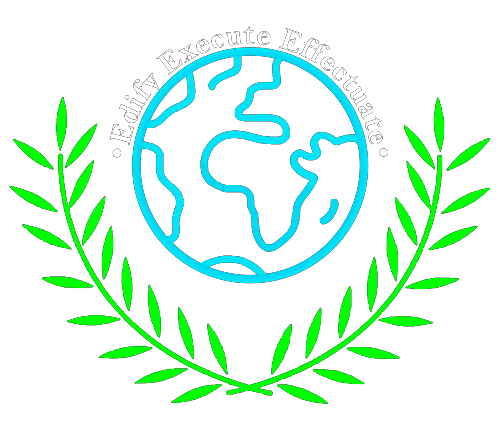Authors : 1.Tanuj Samaddar 2. Ankush Kumar 3. A.R. Sangeetha 4. Mohd. Rizwan 5. Arpita Bhatia
The Indo-Pacific strategy, a strategic framework focusing on trade and energy flows between the Indian and Pacific Oceans, emerged under the Obama and Trump administrations. A paper in 2018 points out that this shift is due to the geo-economic factor with the general volume of trade, particularly energy flows between the Indian and Pacific Oceans. The Indo-Pacific strategy is explored through the lens of power transition and balance of threat. Although the US backs India’s ascent to challenge China’s influence, the strategy’s efficacy is not thoroughly examined, underscoring the power shift and geo-economic considerations.(Scott,2018) A study which brings out the paradigm shift from ‘Asia-Pacific’ to ‘Indo-Pacific’, brings out that the disruptions in the region arise because, even if there is a paradigm shift, the ‘Asia-Pacific’ is still alive. The Indo-Pacific approach, initiated by the US and Japan, is a strategic transition in Asia, involving countries like India, South Korea, Australia, and Europe. As openly pointed out, this strategy aims to contain China’s expansion, despite criticisms. Regardless of political party, the Indo-Pacific strategy has been adopted since Barack Obama’s “pivot to Asia”. “Encircling and containing China’s expansion is its primary task”.(Moon,2023) . India, a thriving democracy and economic power, is emerging as the Vishwa guru, compared to its competitor China. India’s unstable neighbours pose new challenges for its growth. China’s increasing dominance through the Belt Road Initiative (BRI) is responsible for the trade disparities in the South Asian region, highlighting the untapped economic potential and geopolitical uncertainties. The BRI extends to all regions except the Indian subcontinent, further exacerbating regional disunity.(Gahir,2023) A study in 2022 suggests that, as BRI expands itself into the Indian Ocean, it poses security and safety concerns to India. Sri Lanka, Maldives, and Nepal have adopted an anti-India policy, recognizing China’s BRI benefits, which threatens India’s strategic interests, as China’s BRI presence in India’s borders is significant. (Baruah,2022) As a counter to this move, India has indulged itself in damage control, especially with COVID-19 prioritizing neighbouring countries which aim to foster peace and prosperity.(Gahir,2023) While these seem like a strategic move to India and the US, other countries might have varied opinions, which are not recognized in the study. Despite the current geopolitical realities, the possible controversy surrounding the “Asia-Pacific” and “Indo-Pacific” approaches makes it difficult to study paradigm shifts.(Moon,2023) But India’s growth story is put to the test when its comparatively unstable neighbours are taken into consideration. The ‘DOMINO THEORY OF DEMOCRACY’; With the Indo-Pacific approach, India’s growth should have a positive influence on its neighbouring countries. However, the interactions demonstrate that regional instability is complex, and given the neighbourhood’s unstable state, this could hinder India’s development. The study does not suggest reforming the detrimental domino effect, as its impact on other countries, apart from India and China, is not examined.(Gahir,2023) Another research in 2022 focuses on the important island nations which are in the Indian Ocean, as they are key sea lines of communication. As the Indian Ocean gains importance as a part of the Indo-Pacific approach, Islands need to realise and resume their competition in shaping great power as their foreign policies vastly influence neighbourhood relations with countries like India and China. The Indo-Pacific strategy, initially adopted by India to counter China’s influence, now emphasizes partnership as the central pillar, aiming to make India the leader of the Global South. The study alludes India to extending beyond traditional neighbours like New Zealand and Canada.(Baruah,2022) India and its neighbors should explore alternative, democratically-based alternatives for a good partnership based on foundational principles, as the Indo-Pacific vision may not be universally accepted.
With China’s rapid ascent as a military and economic giant reshaping regional dynamics, the Quad Alliance has emerged to champion freedom and provide alternatives to China’s growing dominance. Yet, the Indo-Pacific faces a complex reality. While economic growth has benefited Southeast Asia, South Asia, and Indian Ocean nations, China is expanding its influence through infrastructure, technology, supply chain control, BRI, and debt-driven diplomacy. Without a decisive response, these strategies threaten the independence and balance of power in the region.(Chinoy,2020) A study focusing on how the Indo-Pacific nations, including Australia, India, and Japan, are adopting a “rules-based order” to address maritime disputes and challenge China’s growing influence in the South China Sea. However, this approach can lead to “rhetorical entrapment,” where countries are bound by the same standards even when conflicting with national interests. Through three key case studies, the Timor Sea dispute between Australia and Timor-Leste, the Chagos Islands issue between the UK and Mauritius, and maritime tensions in the Bay of Bengal between India and Bangladesh—Starting illustrates how this idealistic framework often limits strategic flexibility. The cases reveal the inconsistency between the ideals of fairness and justice and the practical needs of national interests, hindering effective policy implementation.(Strating,2020) While the studies majorly focus on the macro impact of QUAD on the Indo-Pacific approach, a different approach which looks at the in-depth examination of Indonesia’s response to the shifting Indo-Pacific dynamics highlights its strategic effort to balance economic opportunity with regional security. Indonesia, a country of great importance, benefits from economic growth from China and India. However, it remains cautious about intensifying US-China rivalry, particularly China’s assertive actions in the South China Sea. Indonesia’s “hedging plus” approach aims to maintain neutrality while safeguarding its interests, avoiding overreliance on any single global power. Indonesia, a key player in ASEAN, leverages its strategic position between the Indian and Pacific Oceans to assert itself as a middle power, balancing regional influence while maintaining independence. However, this strategy may limit Indonesia’s ability to make bold decisions.(Anwar,2023)
Despite ongoing geopolitics, food security and safety remain a crucial issue for all countries, influencing the future of power in the QUAD and Indo-Pacific regions. Pacific Island communities once relied on diverse crops for food security, but colonization and globalization disrupted these systems, favoring export-oriented production and cash crops over local food diversity, leading to a dependence on less nutritious and culturally significant imported foods. The increasing reliance on external food sources, combined with the growing threats posed by climate change, rising sea levels, extreme weather, and shifting agricultural conditions has exposed the weaknesses of these altered food systems. Such challenges pose significant challenges to food security, necessitating a balance between traditional knowledge and modern approaches, promoting crop diversity and climate change adaptation to ensure sustainability and self-reliance.(Campbell,2015) Socioeconomic difficulties, sea level rise, and climate change all have a significant impact on food security in Asia-Pacific islands. Traditional approaches frequently overlook the intricate social and environmental systems of islands when scaling technology advancements for food security. A study in Indonesia and Papua New Guinea used “no regrets” and community participation to adapt food and livelihood systems. Findings showed heterogeneity in tactics across villages, making widespread implementation challenging. To overcome cultural, political, and institutional constraints, the study suggests deeper community-level learning and systemic reforms. Pacific Island nations face a “double burden” of malnutrition, with children suffering from micronutrient deficiencies and adults experiencing obesity, diabetes, and heart disease.(Butler et al.,2020) In urbanized regions, traditional Pacific Island dietary habits are declining due to shifts to salaried jobs and processed foods. This neglect of traditional habits, such as fish consumption, undermines health and cultural traditions. The undervaluation and under-researching of fish consumption in urbanized regions hinders efforts to preserve these traditions.(Charlton et al.,2016) Another study focusing on two villages in Vanuatu—one rural and the other peri-urban—highlights concerning patterns in food and nutrition security (FNS). The peri-urban village faces declining dietary quality due to reliance on imported, low-nutrient products, while rural villages enjoy varied, locally grown food, but face increased vulnerability to environmental disturbances and climate change effects, highlighting a significant oversight. FNS, a growing issue, necessitates a region-specific strategy to address its impact on social cohesion, cultural practices, and community health.(Savage et al.,2020)
As the Indo-Pacific expands, it also faces problems including natural disasters, climate change, and socioeconomic problems that jeopardize livelihoods and food security. Real-world applications of resilience are increasingly being explored, highlighting the need for clear, context-specific thinking to improve outcomes. Despite the challenges posed by fragmented thinking in academic research, the focus on disaster response and climate change remains a significant area of focus.(Friedman et al.,2022)
The Indo-Pacific region has increasingly become a critical arena in global geopolitics, shaped by competing national interests, economic ambitions, and evolving power relationships. Its strategic significance is amplified by vital trade routes, sea lanes, and the escalating rivalry between major powers, particularly the United States and China. These shifting dynamics are redefining the balance of power and altering the ways nations engage with one another.
China’s Belt and Road Initiative (BRI) powerfully illustrates how infrastructure investments and economic outreach have intensified regional power rivalries, directly affecting India’s strategic stance and relations with neighboring countries, particularly China. In response, the United States has championed a Free and Open Indo-Pacific (FOIP) strategy, advocating for a rules-based order to counter China’s growing influence (Koh, 2019). Moreover, India, Japan, and Australia have united in initiatives like the Quadrilateral Security Dialogue (QUAD) to protect their autonomy and promote regional stability (Pant, 2017). This research delves into the evolving geopolitical architecture of the Indo-Pacific through the lens of “normative disruption,” highlighting the transformation of enduring regional rules and frameworks. It also addresses the challenges posed by China’s ascent, the reactions from middle powers, and emerging threats such as climate change and cyber vulnerabilities, all reshaping regional security paradigms. By examining these transformations, the paper assesses how the shifting geopolitical landscape enhances India’s strategic role in influencing the future of the Indo-Pacific.
QUAD
India, the United States, Japan, and Australia, constituting the QUAD, have also formed an essential bastion of Indo-Pacific geopolitics. The findings reveal that QUAD is a strategic and normative mechanism for furthering an inclusive, open, and free Indo-Pacific. The QUAD has committed to addressing traditional and non-traditional security threats through initiatives like vaccine diplomacy, strategic tech alliances, and joint military exercises (Smith, 2020). However, this balance has been disrupted by China’s growing posture in the Indo-Pacific and South China Sea. These few countries do not like that China is taking a relationship-based approach versus the rule-based order that QUAD wants to maintain by giving loans through BRIs and militarizing disputed areas. The QUAD has also served as a valuable mechanism for India to counterbalance China in the region.
GEOPOLITICAL SHIFTS IN INDIA’S NEIGHBOURHOOD
Geopolitical shifts have taken place in the region surrounding India mainly because of rising Chinese influence. The findings indicate that BRI-related strategic investments initiated by China in a few countries, notably Nepal, Sri Lanka, and Pakistan, have aggravated economic dependence. The rent of Sri Lanka’s Hambantota Port to China has raised concerns about debt-trap diplomacy and endangered India’s historical regional influence (Lee, 2021). India’s diplomacy simultaneously focuses on building regional partnerships to alleviate these challenges. Programs such as SAGAR (Security and Growth for All in the Region) and India’s engagement with ASEAN countries reflect India’s commitment to regional security. In addition, India’s engagement with countries, such as Bangladesh, which is connected through trade agreements and the development of ports, indicates a focus on redressing the balance of power concerning China. These efforts, however, highlight India’s focus on blue economy initiatives in collaboration with ASEAN, demonstrating its determination to ensure long-term food security and the establishment of diplomatic relations.
FOOD SECURITY IN THE INDO-PACIFIC
Food security is a significant concern across the Indo-Pacific region, exacerbated by overfishing, climate change, and geopolitical tensions. Those whose livelihoods end because of tricky-to-make-ends-meet imports and diminishing local resources are hit harder, particularly coastal populations and small island states. According to the findings, addressing these problems must be done at a regional level, such as by strengthening supply lines to be acquired through initiatives such as the QUAD (Johnson, 2022). India’s contribution, in this respect, is significant. Also a significant agricultural power, India has had a place in humanitarian support during need and a role in exchanging knowledge on more sustainable farming methods. India’s ability to function as a stabilizing force is evidenced by its food grains export to Indo-Pacific nations facing drought. Alongside partnerships with ASEAN to support blue economy projects, India is committed over the long term to ensuring food security.
The study highlights how deeply intertwined strategic, geopolitical, and humanitarian drivers have led to normative ripples in the Indo-Pacific. As QUAD carries out its action plan in South Asia, India will navigate geopolitics and regional initiatives that seek to establish food security in the region. This requires long-term global engagement, innovative policies, and a shared commitment to sustainability and inclusiveness. India’s proactive approach places it at the heart of a decade of Indo-Pacific evolution that will set the stage for future stability and responsiveness to ongoing upheavals.
REFERENCES
- Scott, D. (2018). The Indo-Pacific in US strategy: Responding to power shifts. Rising powers quarterly, 2(2), 19-43. Retrieved from: https://rpquarterly.kureselcalismalar.com/quarterly/the-indo-pacific-in-us-strategy-responding-to-power-shifts/
- Moon, C. I. (2023). Asia-Pacific vs. Indo-Pacific: Paradigm Shift or False Choice?. Global Asia, 18(3), 14-19. Retrieved from: https://toda.org/assets/files/resources/policy-briefs/t-pb-173_asia-pacific-vs-indo-pacific_moon.pdf
- Gahir, S. R. Challenges to Democracy in a Shifting Global Landscape: India‟ s Neighborhood Perspective. Retrieved from: https://www.researchgate.net/profile/Soumya-Gahir/publication/376857072_Challenges_to_Democracy_in_a_Shifting_Global_Landscape_Indias_Neighborhood_Perspective/links/658d0efe2468df72d3dd7137/Challenges-to-Democracy-in-a-Shifting-Global-Landscape-Indias-Neighborhood-Perspective.pdf
- Baruah, D. M. (2022). India in the Indo-Pacific: New Delhiʹs Theater of Opportunity. Carnegie Endowment for International Peace. Retrieved from: https://carnegie-production-assets.s3.amazonaws.com/static/files/Baruah_UnderstandingIndia_final.pdf
- Chinoy, S. R. (2020). India and the Changing Dynamics of the Indo-Pacific. asia policy, 15(4), 21-36. Retrieved from: https://www.jstor.org/stable/27023937
- Strating, R. (2023). The rules-based order as rhetorical entrapment: Comparing maritime dispute resolution in the Indo-Pacific. Contemporary Security Policy, 44(3), 372-409. Retrieved from: https://www.tandfonline.com/doi/full/10.1080/13523260.2023.2204266
- Anwar, D. F. (2023). Indonesia’s hedging plus policy in the face of China’s rise and the US-China rivalry in the Indo-Pacific region. In Navigating International Order Transition in the Indo-Pacific (pp. 125-151). Routledge. Retrieved from: https://www.taylorfrancis.com/chapters/edit/10.4324/9781003431930-7/indonesia-hedging-plus-policy-face-china-rise-us-china-rivalry-indo-pacific-region-dewi-fortuna-anwar
- Campbell, J. R. (2015). Development, global change and traditional food security in Pacific Island countries. Regional Environmental Change, 15, 1313-1324. Retrieved from: https://www.proquest.com/openview/d9b5715c2b115405d779056cf650976f/1?pq-origsite=gscholar&cbl=54543
- Butler, J. R., Rochester, W., Skewes, T. D., Wise, R. M., Bohensky, E. L., Katzfey, J., … & Duggan, K. (2020). How feasible is the scaling-out of livelihood and food system adaptation in Asia-Pacific Islands?. Frontiers in Sustainable Food Systems, 4, 43. Retrieved from: https://www.frontiersin.org/journals/sustainable-food-systems/articles/10.3389/fsufs.2020.00043/full
- Charlton,E, K., Russell, J., & Gorman, E. (2016). Fish, food security and health in Pacific Island countries and territories. Retrieved from: https://www.sadil.ws/bitstream/handle/123456789/1549/Fish%2c%20food%20security%20and%20health%20in%20Pacific%20Island%20countries%20and%20territories..pdf?sequence=1&isAllowed=y
- Savage, Amy & Bambrick, Hilary & Gallegos, Danielle. (2020). From garden to store: local perspectives of changing food and nutrition security in a Pacific Island country. Food Security. 12. 10.1007/s12571-020-01053-8. Also available at : https://www.researchgate.net/publication/342423439_From_garden_to_store_local_perspectives_of_changing_food_and_nutrition_security_in_a_Pacific_Island_country
- Friedman, R. S., England, R. M., Ricketts, K. D., van Wensveen, M., Lim-Camacho, L., & Crimp, S. (2022). Scanning models of food systems resilience in the Indo-Pacific region. Frontiers in Sustainable Food Systems, 6, 714881. Retrieved from: https://www.frontiersin.org/journals/sustainable-food-systems/articles/10.3389/fsufs.2022.714881/full
- Koh, T. (2019). The Free and Open Indo-Pacific Strategy: US, Japan, and Regional Security Asian Journal of Comparative Politics 5(2), 65–80. https://journals.sagepub.com/doi/10.1177/2057891119864952
- Pant, H. V. (2017). The Quadrilateral Security Dialogue and India’s Strategic Autonomy.Indian Foreign Affairs Journal 12(1), 7–18. https://www.academia.edu/35667522/The_Quadrilateral_Security_Dialogue_and_Indias_Strategic_Autonomy
- Smith, J. (2020). “The Quadrilateral Security Dialogue and Indo-Pacific Strategy. Retrieved from: https://www.cfr.org/in-brief/quad-indo-pacific-what-know
- Lee, M. (2021). “China’s Strategic Investments in South Asia: Implications for Regional Dynamics.” Retrieved from: https://www.brookings.edu/research/chinas-strategic-influence-in-south-asia
- Johnson, T. (2022). “Addressing Food Security Challenges in the Indo-Pacific.” Retrieved from: https://www.fao.org/climate-change/blue-growth/en/







2 Responses
the best article ever
Indeed ! Kudos to you ! To our team !